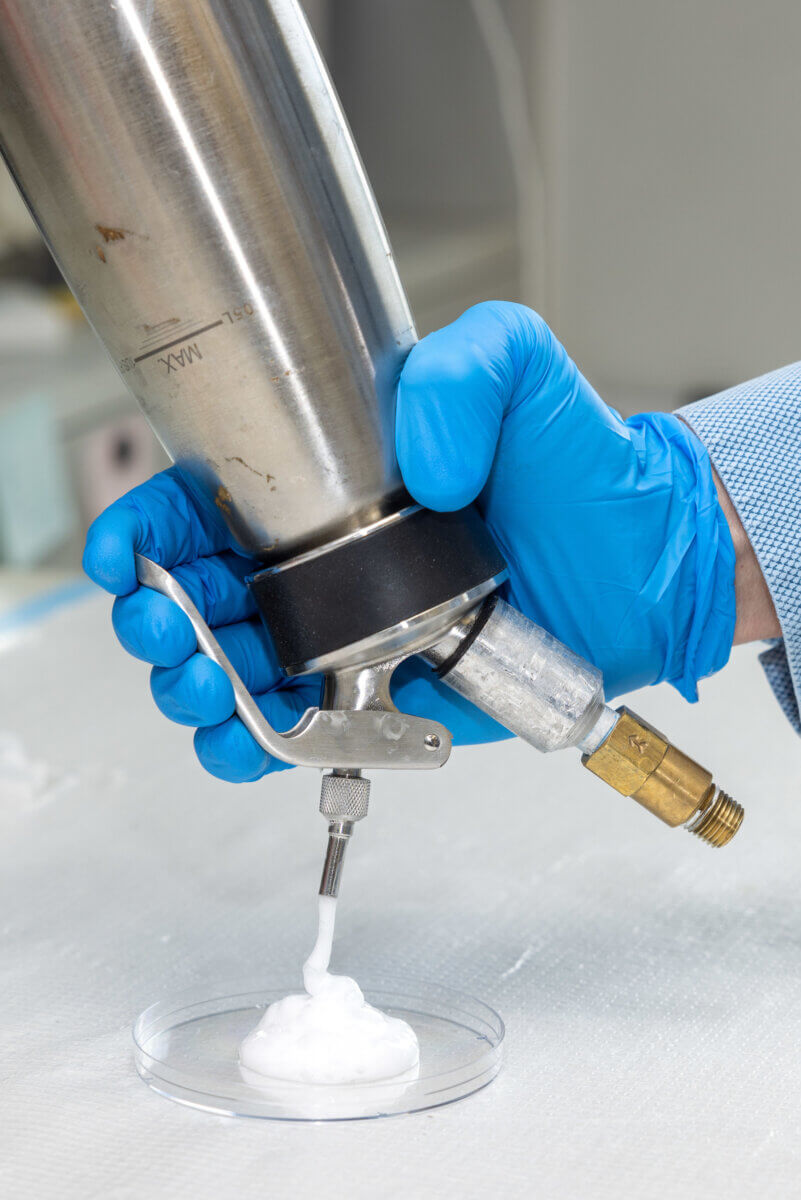IOWA CITY, Iowa — The delicious looking foam on the top of a latte is serving as inspiration for a very interesting goal — beating cancer! The disease is notoriously hard to treat, with doctors still considering chemotherapy and radiation the best options for many patients. Now, however, potentially groundbreaking research by a team at the University of Iowa is creating new, biocompatible materials that may figuratively spray cancer away.
The new materials, called gas-entrapping materials (GeMs), come in the form of foams, solids, or hydrogels. Researchers specifically designed them to carry high concentrations of numerous therapeutic gases directly into tissues, including tumors.
The research team, led by James Byrne, MD, PhD, and Jianling Bi, PhD, at the UI, used these GeMs to deliver high levels of oxygen directly into a series of tumors. Sure enough, this approach appeared to improve the effectiveness of standard chemotherapy and radiation treatments in mouse models of prostate cancer and a type of sarcoma.
Along with the team at UI, this study included researchers from the Massachusetts Institute of Technology, Beth Israel Deaconess Medical Center, and Harvard Medical School.
“We’ve known for a long time that if you increase the amount of oxygen within a tumor you can make it more responsive to radiation, certain chemotherapies, and even potentially immunotherapies,” says Byrne, UI assistant professor of radiation oncology and a member of Holden Comprehensive Cancer Center at the UI, in a university release. “However, the challenge has been how to deliver an effective dose of oxygen in a safe, controlled fashion.”
Beating cancer with 3 simple ingredients
These new findings suggest GeMs are capable of significantly increasing oxygen levels within solid tumors, thus rendering cancer cells more vulnerable to radiation or chemotherapy. More oxygen also appears to promote improved immune reactivity, the key to generating a response to immunotherapy.
“These GeMs are very simple, with just three ingredients: the gas, the foaming agents, and the thickening agent,” explains Byrne, who is also a UI assistant professor of biomedical engineering. “We use several unique, custom-built pressurized systems to incorporate high concentrations of gas into small volumes of these biocompatible materials, which can be injected or implanted into tissues and allow for prolonged, controlled release of the gas.”

How do you make a cancer-killing foam?
Scientists make foam GeMs using a whipping siphon, essentially the same device countless baristas use to make foams on hot chocolate and coffee drinks.
Yet another advantage is the ability to implant or inject GeMs directly into tumors. Intratumoral delivery of cancer therapies is an approach that has gained viability over the past decade due to its capacity to achieve high concentrations of drugs inside the tumor, all while inciting minimal side-effects. For instance, the foams developed by study authors are injectable into areas of the tumor that are harder to treat or remove surgically.
“One of the aspects of this project that really excited me was the combination of cancer biology principles with material science to create something that can be really impactful,” concludes study first author Bi, a research scientist in Byrne’s lab.
The study is published in Advanced Science.

Source link
